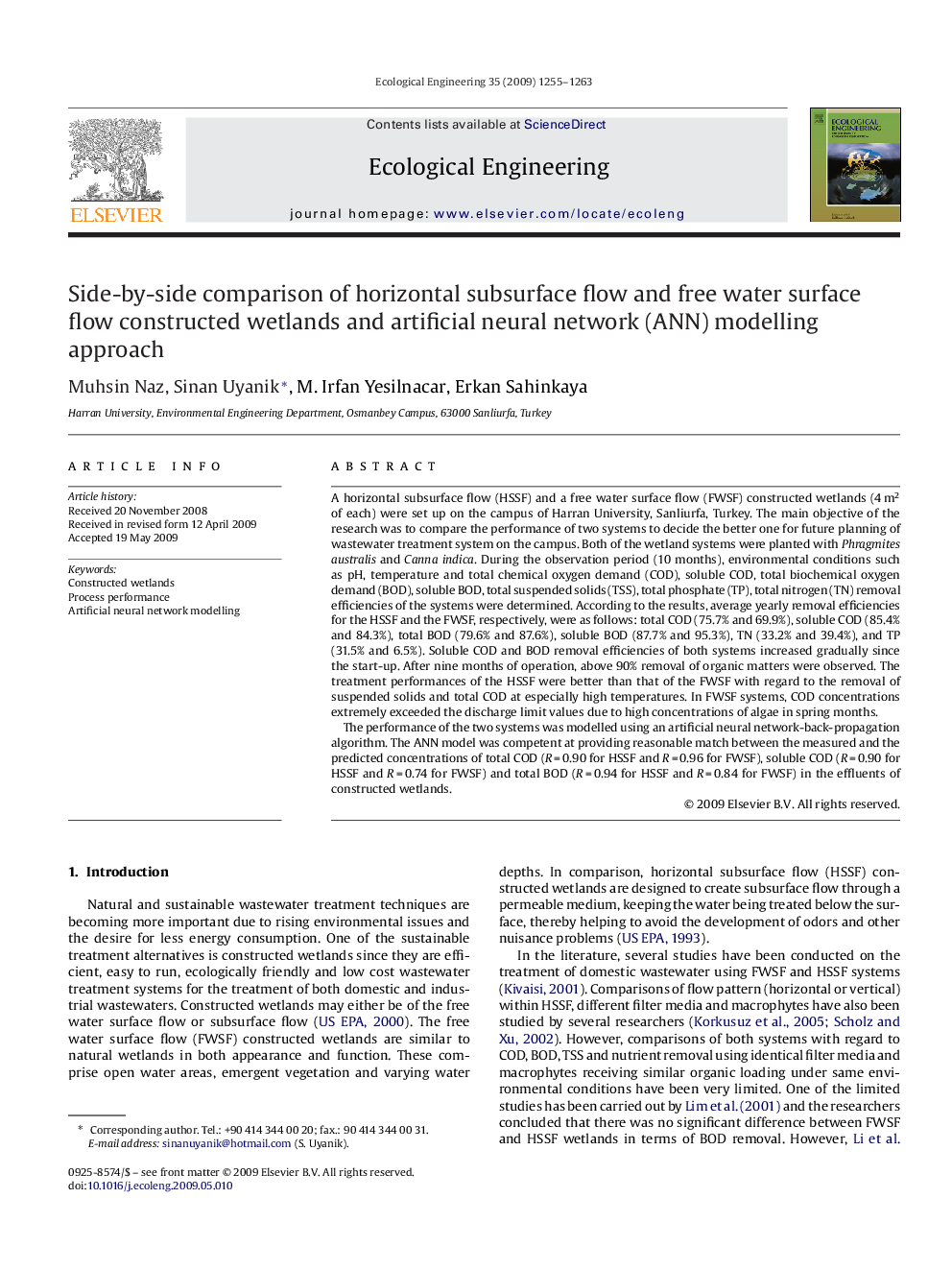| کد مقاله | کد نشریه | سال انتشار | مقاله انگلیسی | نسخه تمام متن |
|---|---|---|---|---|
| 4390845 | 1305196 | 2009 | 9 صفحه PDF | دانلود رایگان |

A horizontal subsurface flow (HSSF) and a free water surface flow (FWSF) constructed wetlands (4 m2 of each) were set up on the campus of Harran University, Sanliurfa, Turkey. The main objective of the research was to compare the performance of two systems to decide the better one for future planning of wastewater treatment system on the campus. Both of the wetland systems were planted with Phragmites australis and Canna indica. During the observation period (10 months), environmental conditions such as pH, temperature and total chemical oxygen demand (COD), soluble COD, total biochemical oxygen demand (BOD), soluble BOD, total suspended solids (TSS), total phosphate (TP), total nitrogen (TN) removal efficiencies of the systems were determined. According to the results, average yearly removal efficiencies for the HSSF and the FWSF, respectively, were as follows: total COD (75.7% and 69.9%), soluble COD (85.4% and 84.3%), total BOD (79.6% and 87.6%), soluble BOD (87.7% and 95.3%), TN (33.2% and 39.4%), and TP (31.5% and 6.5%). Soluble COD and BOD removal efficiencies of both systems increased gradually since the start-up. After nine months of operation, above 90% removal of organic matters were observed. The treatment performances of the HSSF were better than that of the FWSF with regard to the removal of suspended solids and total COD at especially high temperatures. In FWSF systems, COD concentrations extremely exceeded the discharge limit values due to high concentrations of algae in spring months.The performance of the two systems was modelled using an artificial neural network-back-propagation algorithm. The ANN model was competent at providing reasonable match between the measured and the predicted concentrations of total COD (R = 0.90 for HSSF and R = 0.96 for FWSF), soluble COD (R = 0.90 for HSSF and R = 0.74 for FWSF) and total BOD (R = 0.94 for HSSF and R = 0.84 for FWSF) in the effluents of constructed wetlands.
Journal: Ecological Engineering - Volume 35, Issue 8, August 2009, Pages 1255–1263